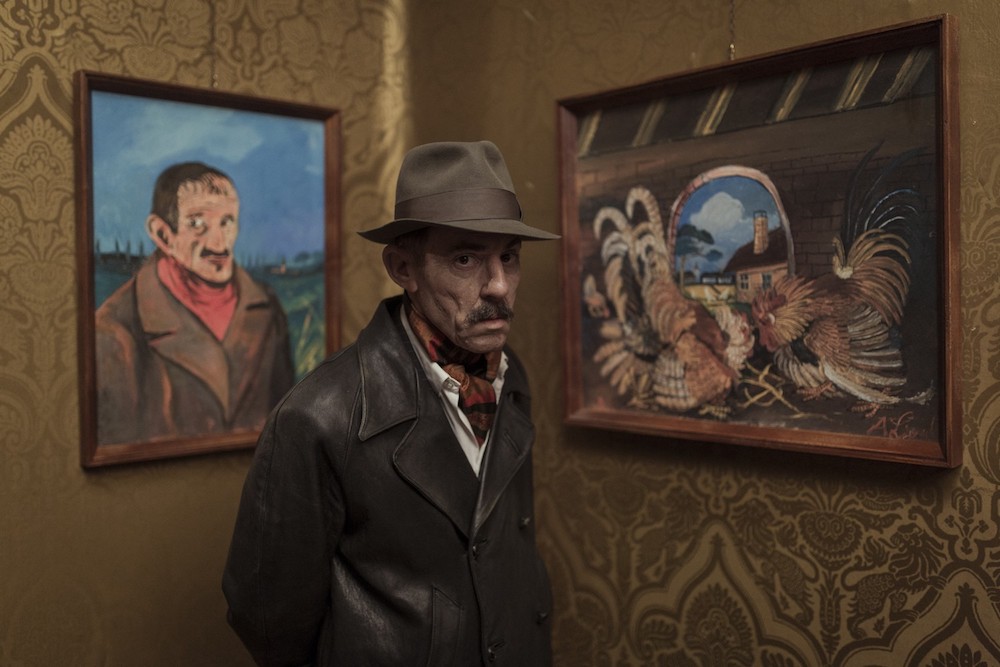‘Hidden Away’: Film Review
By Jay Weissberg
LOS ANGELES (Variety.com) – Antonio Ligabue holds an unusual place in the annals of mid-20th-century Italian art, championed by those who feel his boldly-colored, largely naive paintings are the product of a self-taught artist whose mental incapacities prove that natural spirit transcends training and intellect when wielding a paint brush. Wherever one falls on Ligabue’s talents, making a film about his life would always be tricky given the difficulty of depicting on-screen a linguistically challenged, differently-abled man prone to frequent eccentric outbursts without falling into the trap of implying we should celebrate his output simply because he was what would have been called in the past “simple minded.”
Yes, Elio Germano tackles — he seems to almost always tackle — the fiendishly difficult role with customary gusto, and the screenplay works hard to develop sympathy, yet Giorgio Diritti’s mélange of impressionistic episodes and straightforward biopic recreations make “Hidden Away” more a record of a performance than a satisfying cinema experience. The filmmakers, cast included, certainly studied the documentary footage that’s out there, and on that level they’ve done a remarkable job. It’s unlikely however this will translate into any notable box office success at home, while international sales could be hampered by a 2018 copyright date on top of everything else.
It’s less maddening a portrait than Julian Schnabel’s self-indulgent “At Eternity’s Gate” about Vincent Van Gogh, an artist to whom Ligabue has occasionally been superficially likened, though it’s an extremely facile comparison given that the Italian’s developmental disabilities are worlds apart from Van Gogh’s mental instability. In addition, Ligabue had no training, and while a surprisingly competent draftsman, his basic palette of brash primary colors has no parallel with Van Gogh’s transcendent brushwork, and is more casually in line with Henri Rousseau, though it’s unclear what exposure he had to any kind of art.
Diritti (“There Will Come a Day,” “The Man Who Will Come”) opens with a montage of non-chronological scenes designed to give audiences an immediate, emotional understanding of Ligabue’s past. Born out of wedlock to an Italian mother and raised by a Swiss-German couple, he was tormented as a child (Leonardo Carrozzo) by classmates and treated with shocking disdain by all adults apart from his foster mother Elise (Dagny Gioulami). Mothers loom large in this story (a helpful undercurrent for any Italian film given the nation’s quasi-holy elevation of all mater familiae): In general they’re the only ones who can calm him down, though one later thwarts his latent sexual desires when he sets his eyes on her daughter. In contrast, men in authority are horrid, including headmasters and the director of a mental institution where he spends some time.
Just when or where he began drawing and painting is unclear — he’s already doing it in the asylum — but an encounter with sculptor Renato Marino Mazzacurati (Pietro Traldi) proves fundamental when he and his saintly mother (Orietta Notari) give Ligabue a place to live and the means to pursue his art. World War II temporarily interrupts the idyll, but sometime after the war he starts selling his work, which ultimately reaches the hands of art world cognoscenti, who arrange a gallery exhibition in Rome. Success allows Ligabue to indulge his childlike passion for motorbikes and cars, though the matrimonial fantasies he envisions with plain-faced Cesarina (Francesca Manfredini) are arrested by her housekeeper mother (Daniela Rossi).
The script legitimately has its share of invention — credits say it was loosely inspired by Ligabue’s life — yet precisely because of this, the narrative scenes in the second half need to act as more than just stand-ins designed to bring audiences through a messy life. Even though unexplained, there’s no issue with a sequence of Ligabue wearing a dress since the real man was captured on film doing the same, but who exactly are all these nice people finally looking after his best interests (this is the art world, after all)? , and Diritti does nothing to counterbalance this challenge. Instead he indulges it, so even though documentary footage shows that Germano is doing an impressive job recreating Ligabue’s mannerisms, it all feels over-the-top.
The flat Po valley in Emilia-Romagna, beloved by Diritti as well as a host of major Italian directors from Visconti to Olmi and beyond, is evocatively shot with its regularly-spaced copses and brick country houses inhabited by good-hearted people of the earth. A number of scenes are shot with what appears to be a modified fish-eye lens that puts the edges of the screen out of focus, but it’s difficult to discern why the director uses it some times and not at others. Prosthetic designer Lorenzo Tamburini does an excellent job adapting Germano’s face to Ligabue’s unharmonious contours.

